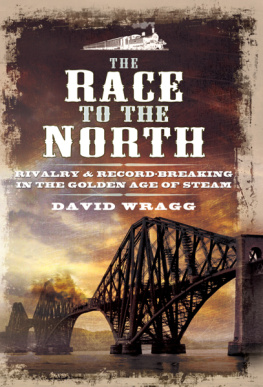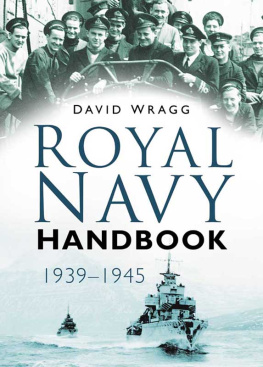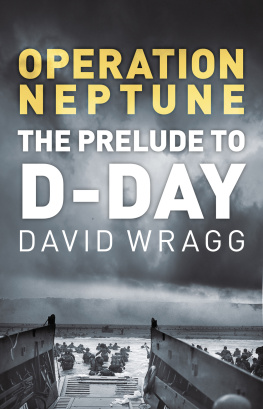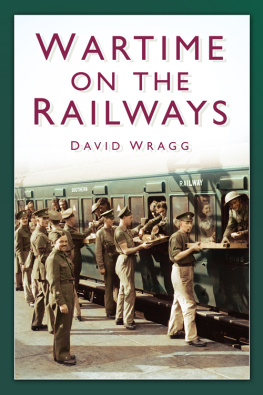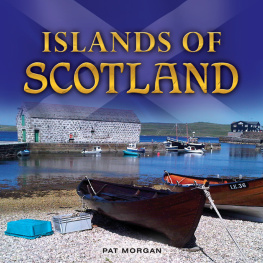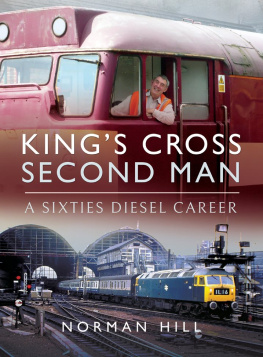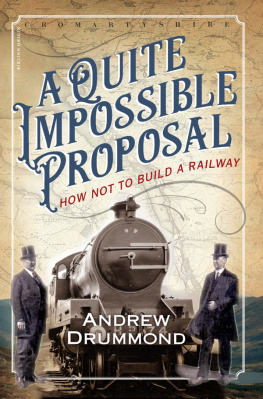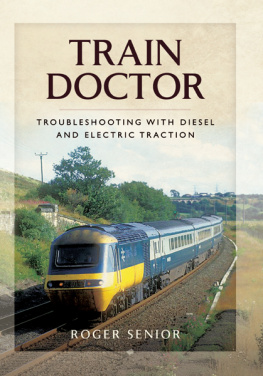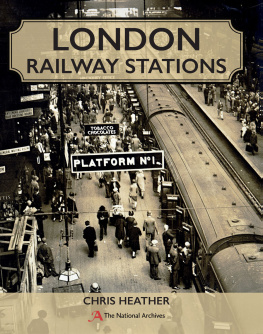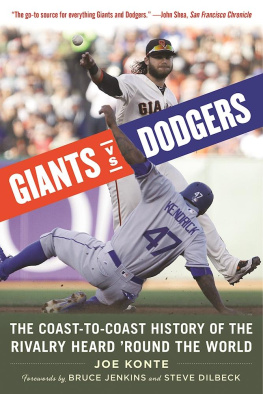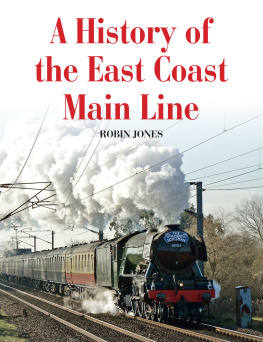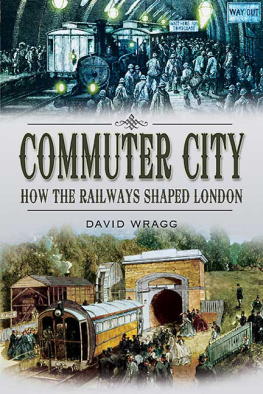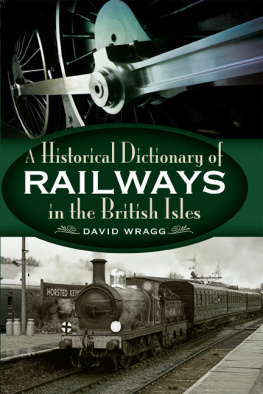First published in Great Britain in 2013 by
WHARNCLIFFE TRANSPORT
an imprint of
Pen & Sword Books Ltd
47 Church Street
Barnsley
South Yorkshire
S70 2AS
Copyright David Wragg, 2013
ISBN 978-1-84884-772-9
EPUB ISBN: 9781473822368
PRC ISBN: 9781473821880
The right of David Wragg to be identified as the author of this work has
been asserted by him in accordance with the Copyright, Designs and
Patents Act 1988.
A CIP catalogue record for this book is available from the British Library.
All rights reserved. No part of this book may be reproduced or transmitted in
any form or by any means, electronic or mechanical including photocopying,
recording or by any information storage and retrieval system, without
permission from the Publisher in writing.
Typeset by Concept, Huddersfield, West Yorkshire.
Printed and bound in England by CPI Group (UK) Ltd, Croydon, CR0 4YY.
Pen & Sword Books Ltd incorporates the imprints of Pen & Sword Aviation,
Pen & Sword Family History, Pen & Sword Maritime, Pen & Sword Military,
Pen & Sword Discovery, Wharncliffe Local History, Wharncliffe True Crime,
Wharncliffe Transport, Pen & Sword Select, Pen & Sword Military Classics,
Leo Cooper, The Praetorian Press, Remember When, Seaforth Publishing and
Frontline Publishing.
For a complete list of Pen & Sword titles please contact
PEN & SWORD BOOKS LIMITED
47 Church Street, Barnsley, South Yorkshire, S70 2AS, England
E-mail:
Website: www.pen-and-sword.co.uk
Contents
Acknowledgements
In researching any book such as this, an author is always grateful to those who have written on the subject in the past and especially the contemporary accounts to be found in places such as the Search Engine of the National Railway Museum of York, where the back copies of many railway magazines, including The Railway News, are to be found. I would like to thank the staff of the NRM for their unfailing helpfulness and cheerfulness.
David Wragg
Edinburgh
March 2012
Introduction
Imagine boarding a train, while on the other side, or in railway terms face, of the platform sits another train. Both leave together at exactly the same time, but then attempt to race each other to the terminus at the end of the line. Fantasy? Of course it is. It could never really happen like that, at least, not quite like that. Yet, in place of another platform substitute another terminus, less than a mile away, and the fantasy becomes reality.
In the late nineteenth century, some of Britains leading mainline railway companies threw caution to the wind in an attempt to provide the fastest passenger express services between London and Scotland. These became known as the races to the north and came in two phases, in 1888 and 1895, with the first set of races being to Edinburgh, while the later set was spurred by the new bridges across the Firth of Forth and Firth of Tay and, naturally, Aberdeen was the objective.
This is the story of races on the railways in the late nineteenth and early twentieth century, including that between the London & South Western and Great Western railways that resulted in a serious fatal accident at Salisbury, which focusses mainly on the determination of the railway companies to see who could provide the fastest schedule between London and the main Scottish cities.
The rivalry and its intensity was surprising given that previously the companies had seemed content to coexist and had even, at one stage, agreed that trains to Glasgow should only run from Euston while Edinburgh was to be served only from Kings Cross. Even after it was agreed that both these London termini could serve the two main Scottish cities, revenues were apportioned. The East Coast Main Line (ECML) soon became the faster route, with the day express between Kings Cross and Edinburgh an hour quicker than that from Euston, but the London & North Western Railway (LNWR), economy-minded at the time, objected to fast running as the locomotives consumed too much coal. Looking back over more than a century, it is important to bear in mind that not everyone realised that speed was important or even a marketing advantage, as an alternative to the road coach and later the railway was travel by sea, with both the East and West Coast routes well served by small liners, sometimes carrying up to 300 passengers, and also by cargo ships with accommodation for a limited number of passengers.
Until the Tay and the Forth were bridged, north of Edinburgh the ECML had to transfer its passengers to ferries and its goods wagons to barges to continue northwards to Aberdeen. With the backing of the other companies engaged in the East Coast group of companies, the North British Railway constructed a bridge across the Firth of Tay and planned a bridge across the Firth of Forth so that the rivalry between the East and West Coast companies could extend to Dundee, Perth and Aberdeen. Disaster struck on a stormy night, 28 December 1879, when the Tay Bridge collapsed as a train was running northwards across it, with the loss of all seventy-two people aboard.
The Tay Bridge was replaced and a different engineer designed a bridge across the Firth of Forth, finally allowing the East Coast companies to become the fastest to Aberdeen. The city was a prime target for the railways because the heavy indentations of the Firth of Tay and Firth of Forth meant that a fast direct route south did not exist, yet the heavy fish traffic, and the prime agricultural produce of the surrounding area, as well as passenger traffic, indicated that the route would be viable.
Even before the two bridges opened, the cosy arrangement between the East and West Coast groups of companies had come under attack in 1876, when the Midland Railway completed its line to Scotland via Settle and Carlisle. Its line was longer and slower than the two existing lines, but the Midland had admitted third-class passengers to all of its trains and improved their lot by abolishing second-class whilst scrapping its small stock of third-class carriages. By contrast, the East Coast service was first-class only until 1887, the year that the second Tay Bridge opened.
The lack of a through route north of Edinburgh was not the only problem that had affected the East Coast line. For many years, at York and then at Newcastle, trains had to reverse rather than run through the stations.
Before the Forth Bridge was completed in 1890, in May 1888 the West Coast companies suddenly announced that from 2 June their fastest express would run from Euston to Edinburgh in nine hours, the same time as that from Kings Cross. The East Coast companies responded by cutting the through journey time to eight hours, which the West Coast matched from 1 August. On 13 August, the East Coast schedule was cut to 7hr 45min, but on that day the train reached Edinburgh in 7hr 27min. Then, as suddenly as it started, the racing stopped and the two rival groups agreed minimum journey times for their trains.
This was just the first of the railway races to the north. Once the Forth and new Tay bridges were completed, the through journey time to Dundee and Aberdeen was cut, to the benefit of the East Coast line. This was the spark that set off yet another race, between the overnight trains from London to Aberdeen. The timetable was ignored in the interest of getting the trains to their destination in the shortest possible time, but after the East Coast companies decided to stop the race, on the night of 23/24 August 1895, the West Coast train ran the 540 miles from Euston to Aberdeen at an average speed of 63.3mph.
While the idea of two rival trains waiting to depart from opposite sides of a platform was fanciful, something similar did arise on the races to Aberdeen. The first train to pass Kinnaber Junction was first into Aberdeen, and so it happened that on occasion the passengers and crew of the losing train would see their rival steaming by.
Next page
